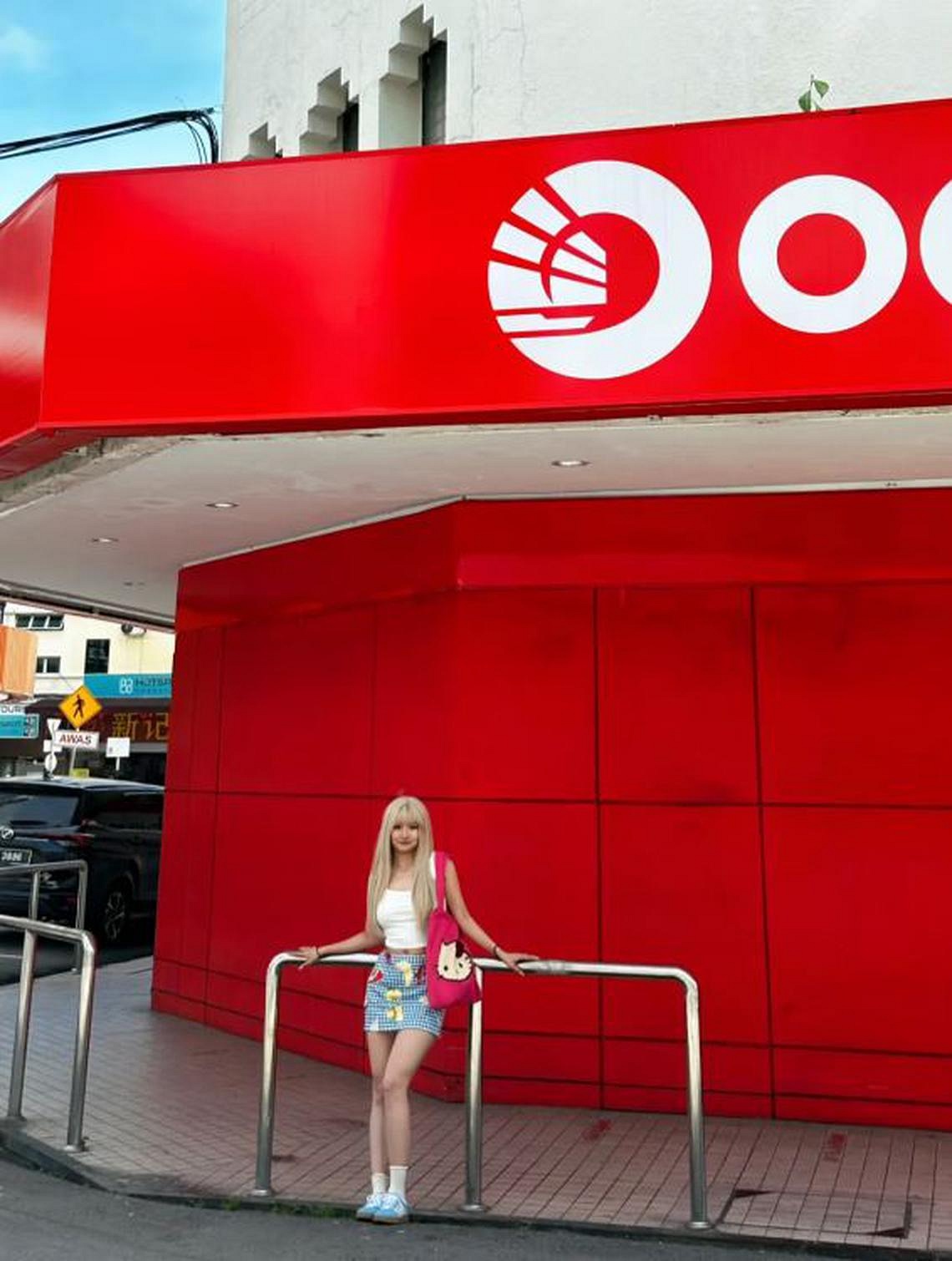Maybank branch in Kota Kinabalu becomes popular attraction among China tourists


What is a unique attraction to photograph while travelling in Malaysia, one that will always bring the trip to mind?
The answer, at least when visiting Kota Kinabalu (KK) in the state of Sabah, seems to be a bank.
The Maybank branch on KK’s Gaya Street has become Sabah’s latest scenic spot to photograph, alongside religious sites, nature destinations and famous restaurants.
The bank outlet went viral on Chinese social media platform Xiaohongshu in recent weeks, alerting hordes of Chinese visitors to its "Instagrammable" quality.
They have been visiting the location to capture their own precisely framed photos with the bank’s yellow signboard.
Gaya street Maybank at Kota Kinabalu now. Win liao. Don't mind please pic.twitter.com/sTAsFGVcVE
— Don't Mind Please (@DoNotMindPlease) August 14, 2024
Some have found other banks in the same area appealing, including Singapore’s OCBC Bank less than 1km away, which, with its red signboard and walls, is attracting an increasing number of tourists looking to get a shot for the Chinese ‘Gram.
While pleasantly surprised, locals initially struggled to grasp the origins of that site’s popularity.
Some surmised that a celebrity or online influencer may have popularised the spot by taking a photo there, while others joked that KK is so devoid of attractions that tourists had to create one.

Some Xiaohongshu users attributed it to the bright hues of yellow and red — colours traditionally associated with prosperity in China.
Posts on the platform advise visitors to the city to add the spot to their city walk itinerary, and make a pilgrimage to da ka — or "check in" — in Chinese social media parlance.
Equally bemused by the spot going viral, KK MP Chan Foong Hin visited Gaya Street to speak to some of the tourists there and — naturally — get a few shots.
"Although I couldn’t understand the trend, as the local MP, seeing that our home turf is becoming so popular among the tourists, this reflects that Kota Kinabalu has rich tourism resources," the Deputy Minister of Plantation and Commodities wrote in a Xiaohongshu post also posted on Facebook, with dozens more replying to his post with their own photos.
AirAsia chief executive officer Tony Fernandes also checked in during a recent visit to KK to receive an award by the Sabah Tourism Board on Aug 13 for contributions to the state’s tourism industry.
"I’m here to continue the virality of this site," he said, as he legitimised it as an attraction and added to the location’s legend with a photo of it he put up on TikTok.
"Anything that can promote Sabah is good for me," said Fernandes.
In fact, some tourists may have arrived in KK thanks to the Malaysian tycoon’s budget airline, with the east Malaysian city connected to Chinese cities Guangzhou, Shenzhen and Ningbo via direct flights.
The human instinct and drive to seek novelty extends to how we experience and share our surroundings, especially in the context of tourism, said Dr Hamza Shahab, assistant professor of digital marketing at the University of Nottingham Malaysia’s business school.
"This trend reflects an effort to break through the visual clutter of traditional tourism images and offer something different," he said, drawing a contrast with conventionally popular landmarks such as nature or historical sites.
"By choosing less obvious, more ordinary settings — such as a closed bank, a plain street corner, or the front of a restaurant — tourists are effectively disrupting the expected narrative of travel photography. These images often evoke curiosity and interest precisely because they deviate from the norm."
Chinese tourists had previously made their presence felt at seemingly unimpressive locations in Hong Kong, such as a basketball court in Kennedy Town and a police station in Yau Ma Tei.
Their showing up at Gaya Street has prompted Malaysians to become domestic tourists and "check in" at the spot online themselves.
Joining the trend of taking photos at viral spots also helps tourists attract more followers of their own on social media, Dr Hamza added, as posting with hashtags highlighting KK or the city’s Chinese name, pronounced ya bi, could see their posts also go viral and be organically promoted by the platform’s algorithms.
While some of the earliest posted photos of the bank go back to January, he does not expect the trend to last long beyond a few weeks. Newer posts also add to "visual clutter" on social media and may fade away in memory unless institutions step in intentionally to market or promote the location.
Maybank has already leveraged this organic, consumer-driven trend and promoted hotel bookings with photos of the viral spot, he said, with other organisations also possibly benefiting from promoting local businesses in Sabah.
While some have observed a positive impact on local businesses from the influx of Chinese and Korean tourists, according to media insights firm Dataxet, the local KK city council (DBKK) has also been keen to sustain the spot’s conduciveness for visitors.
Sharing photos of men at work on Aug 15, DBKK said it was committed to maintaining the area, noting it had attracted international tourist attention, and pledged to also keep other parts of KK clean and liveable.
And for now, travellers to the city can still check in at the spot, if only before the buzz dies down.
This article was first published in The Straits Times. Permission required for reproduction.